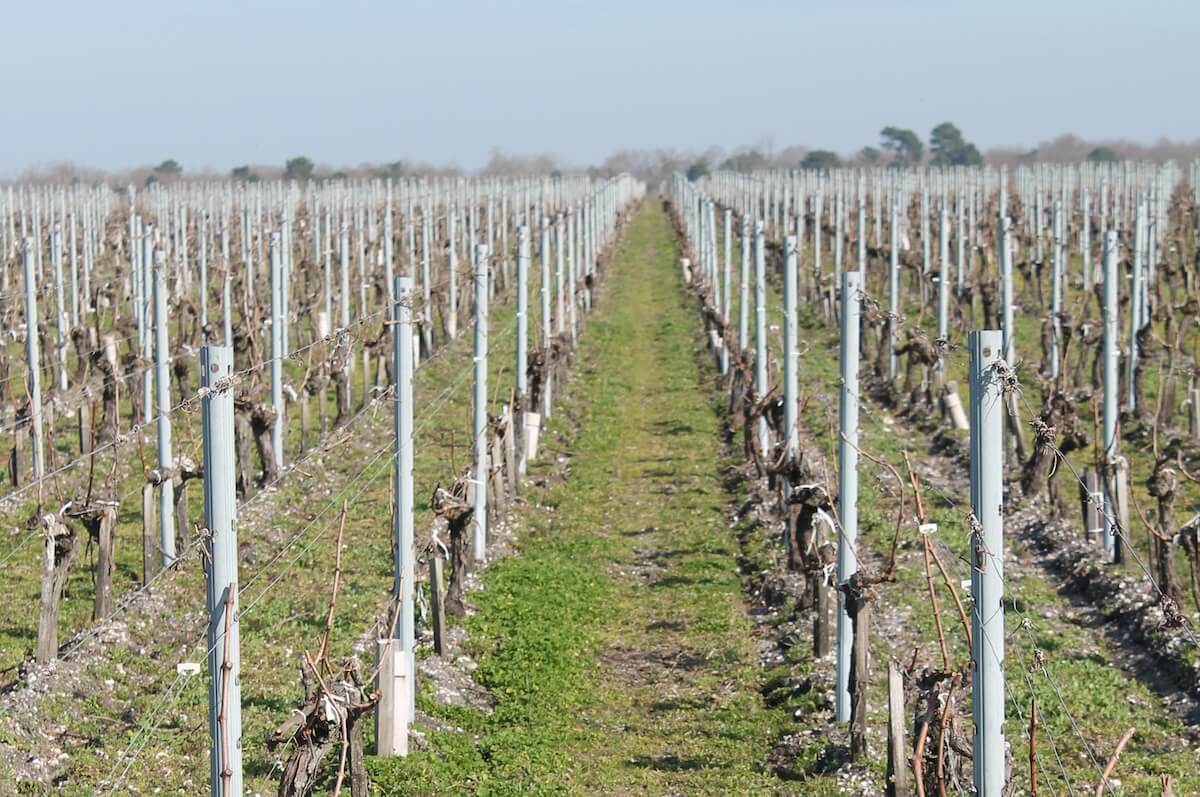Winter is often seen as a time of rest in the vineyard. However, it is a strategic period for ensuring the proper course of the vine’s growth cycle. Cold weather, when sudden or poorly anticipated, can cause considerable damage: loss of buds, cracks in the vine trunks, reduced yields, or even the death of the plant.
Winegrowers must therefore contend with the whims of the climate and implement precise, adaptive strategies that blend tradition, agronomic knowledge, and technological innovation. Here’s an overview of the challenges that cold weather poses for the vine, and the best practices to prepare for it.
What are the different types of frost?
Not all frosts are the same. Depending on whether they occur before dormancy, in the heart of winter, or during the vine’s delicate awakening, their consequences can be radically different. The vine is a living organism that follows a precise natural rhythm; it can withstand certain levels of cold when deeply dormant, but becomes extremely vulnerable when it is in full vegetative activity.
Thus, distinguishing between the different types of frost is not merely a theoretical exercise — it is the key to any effective protection strategy. It enables the winegrower to anticipate, take action at the right time, and preserve the future vintage. Let’s take a closer look at these three critical phases.
The vine’s sensitivity to cold varies depending on the time of year. It is essential to distinguish between the different types of frost in order to better anticipate them:
🍁 Early autumn frosts
- Surviennent avant que la vigne n’ait eu le temps de constituer ses réserves.
- Risk: dormancy setting in too quickly, premature leaf drop, and overall weakening of the plant.
❄️ Winter frosts
- During the vine’s dormant period, it withstands the cold relatively well, provided that the drop in temperature is gradual.
- Danger: severe frost or a sudden return of cold after a mild spell, which can cause:
- Destruction of dormant buds
- Cracks in the wood (frost splits)
- Poor wood ripening
- Reduced vigor in the following spring
🌱 Spring frosts (the most feared)
- Occur after budbreak, when the young shoots have already emerged.
- Risk: loss of buds and shoots, with the entire harvest potentially compromised in extreme cases.
🔎 Good to know: a temperature of -2 °C can be enough to kill newly emerged shoots.
Preparatory work: protecting the vine before winter
While winter may appear to be a season of rest for the vine, it is anything but restful for the winegrower. In reality, it is one of the most crucial periods for the vineyard’s future health. Everything is decided before the first major frosts: the way the vine, the soil, and the surrounding environment are prepared has a direct impact on their ability to withstand climatic stress and to restart vigorously in spring.
Pruning: a gesture as delicate as it is strategic
Pruning the vine, carried out after the harvest, is a fundamental act — both technical and symbolic. By cutting what has borne fruit, one prepares what is yet to grow. However, in regions exposed to early or severe frosts, the timing must be handled with great care. Pruning too early exposes the vine’s fresh wounds to biting cold, increasing the risk of tissue damage or poor healing. Conversely, late pruning, though more demanding, helps protect the vine stock and optimizes its recovery in spring. The goal is to preserve the vitality of the wood while limiting its exposure to frost-sensitive openings. It is a form of preventive care — pruning that protects rather than stresses the plant.
Choice of grape variety and planting layout: considering the risk from the very start
Protecting the vine from the cold begins well in advance — with the choice of grape variety and a careful analysis of the site’s topography. In frost-prone areas, certain varieties, often later-ripening or hardier, are better adapted to thermal fluctuations. But the vine’s resilience also depends greatly on where it is planted. A plot facing north, at the bottom of a valley where cold air collects, will be far more vulnerable than a gently sloping hillside, well-ventilated and generously exposed to sunlight. The soil, too, plays a key role: heavy, poorly drained soils retain moisture and intensify the effects of frost, whereas lighter soils promote water drainage and help regulate temperature.
Soil preparation, vine stocks, and young plants
Before winter, cleaning the soil and maintaining the vineyard structures are essential parts of preparation. This involves removing dead wood, maintaining the trellising, and aerating the base of the vines to promote vegetative balance and prevent disease. Young vines, meanwhile, require special care. Still fragile, they can be mulched, earthed up, or protected with insulating sleeves to reduce frost damage. In the most exposed regions, mounding soil around the base of the vine — a traditional technique known as buttage — provides an effective thermal barrier against severe winter cold.
Managing ground cover to strengthen the vine
Finally, maintaining the right balance of ground cover is essential to ensure a vigorous vine before dormancy sets in. Too much vegetative competition deprives the plant of nutrients and energy; too little, and the soil becomes vulnerable to erosion and temperature fluctuations. The goal is to allow the vine to complete its cycle by accumulating sufficient reserves, while promoting deep rooting and healthy soil aeration. This balance is what enables the vine to face winter with resilience — ready to be reborn in spring.
What techniques are commonly used today to protect vineyards from frost?
When cold becomes a real threat — when temperatures drop sharply and the sky clears toward the end of the night — winegrowers no longer have the luxury of waiting: they must act, and fast. It’s in these critical moments that active frost-protection techniques come into play. Each has its advantages and limitations, but when used correctly, they can make the difference between a lost harvest… and a vintage saved.
Water sprinkling: ice that protects
Surprisingly, it is sometimes water that protects against the cold. The sprinkling technique involves spraying water over the buds or young shoots when the temperature nears 0 °C. As the water freezes, it forms a protective layer of ice that releases heat — a phenomenon known as the latent heat of crystallization. This heat keeps the plant tissues just above the lethal threshold, preventing them from being damaged.
Highly effective down to -6 °C, this method nevertheless requires great technical precision: a constant water flow, even coverage, and well-maintained irrigation systems. It is not suitable for all vineyards, especially in areas with limited water resources or challenging terrain.
Heating: bringing warmth back into the vineyard rows
For centuries, winegrowers have lit fires to fight frost. Today, this tradition has evolved: antifreeze candles, gas heaters, and hot-air blowers are used to warm the air around the vines.
The most modern systems, such as Frost Guard devices, distribute warm air in a rotating motion to cover several hectares. These systems are particularly useful during radiation frosts, when cold air settles near the ground. However, their logistical and energy costs are high, and their effectiveness can be reduced in strong winds or prolonged freezing conditions. They are valuable yet demanding tools — effective for targeted, short-term protection.
Air mixing: breaking up cold air stagnation
On calm, clear nights, cold air sinks and accumulates at ground level, smothering young shoots in a layer of frost. To break this stratification, some vineyards install vertical fans or specialized wind machines capable of mixing the air and reintroducing warmer layers from a few meters above the ground. This preventive method helps reduce temperature fluctuations and lessen the impact of radiation frosts. However, it requires a fixed installation, a reliable power supply, and shows its limits during advection frosts, which are deeper and more dynamic.
Mounding: the soil as a natural blanket
Among the oldest — yet still widely used — methods is mounding, which involves piling soil around the base of the vine to protect the lower part of the trunk, where the replacement buds are located. This natural technique provides effective insulation against the cold, especially for young or fragile vines. Though traditional, mounding remains remarkably useful in regions with harsh winters. However, it requires significant manual or mechanical labor and is not always compatible with certain modern trellising or training systems.
To these classic methods, several complementary solutions can be added. In some plots, thermal nets, biodegradable mulches, or even individual coverings are installed over young vines. Choosing rootstocks that are more resistant to cold, or adapting cultivation practices — such as late pruning or lower trellising to benefit from ground warmth — can also help reduce risk. Each estate, each terroir, and each configuration requires its own tailored approach. What matters most is understanding one’s vulnerabilities, monitoring the weather closely, and having a clear strategy in place before frost strikes.
And after winter?
When the frost has passed, temperatures begin to rise, and the days grow longer, a period of careful observation begins. The winegrower does not relax their vigilance — quite the opposite. It’s time to assess any damage caused by the cold: blackened buds, split wood, weakened shoots. This post-frost phase is crucial for adjusting spring viticultural decisions. For example, targeted debudding can help redirect the plant’s energy toward the buds that remain healthy. Corrective pruning may be adapted to ease the strain on the vine stock. In some cases, it’s wiser to accept a reduced yield in order to preserve the vine’s reserves and encourage regeneration rather than forcing production.
This is also the time to draw lessons from the winter episode: which plots resisted best? Which techniques proved effective — or insufficient? This feedback will guide the decisions of the following year, gradually strengthening the vineyard’s resilience. For every winter is different, yet each teaches us something about both the fragility and the strength of the vine.
Invisible to the casual walker or wine enthusiast, the work carried out in the vineyard during winter is nonetheless among the most demanding and essential of the year. It requires foresight, precision, and humility. Faced with the whims of the climate, the winegrower becomes a watchman — a guardian of life — able to read the signs of both sky and soil. They prune, protect, adjust, and observe — not in haste, but with a patient, far-sighted vision.
For preparing the vine to withstand the cold is also preparing the quality of the wine to come. Every well-placed protection, every thoughtful cut, every carefully managed soil quietly nourishes the future vintage. In this hushed struggle against frost lies a kind of viticultural poetry: the art of protecting the invisible to reveal the unexpected.



